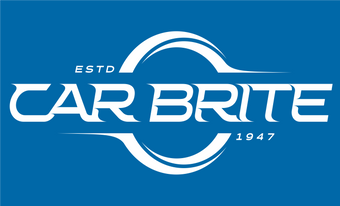The Heat Is On … Product Usage

Compounds & Polishes are both formulated with solvents which carry the abrasives and resins to the painted surface. Hot temperatures cause the solvents to evaporate more quickly which can result in the product cutting more aggressively (less solvent in relation to the abrasives present), and gumming up more readily (the balance of solvents, abrasives & resins is altered which affects buffing performance).
Use less product in hot weather, and ensure that your pads are in good condition and that the surface you're buffing is cool to the touch.
Waxes & Paint Sealants bond better in higher temperatures, which is good unless the product is applied too heavily. When over-application occurs, residue can be difficult to remove.
Final finish products tend to dry more slowly in high humidity, which results in users trying to wipe product off the painted surface before it's fully dry. This causes streaking, uneven gloss and unhappy customers.
The answer to both problems is to ensure that the product is applied lightly and evenly, and not taken off until it has hazed completely.
Dressings dry faster in hot weather. Caution should be exercised when using solvent-based dressings which are more likely to flash in higher temperatures. Silicone-free dressings containing glycerin should also be monitored since they emit vapors in high humidity which fogs windows.
In addition, improper application of both solvent- and water-based dressings on tires can result in staining of the surrounding painted surfaces. Carbon black from the tire mixes with the dressing's shine agent (silicone, glycerin or mineral oil) during application. If the vehicle is moved before this mixture dries, the mixture can be slung onto the fascia and discolor it. Plastic fascias with flex agents in the clearcoat are especially susceptible.
Though higher temperature speed up the drying of the dressing on the tire, they can also accelerate the staining should the mixture be slung on the paint, and make the stain much more difficult to remove.
Thus, proper technique when applying tire dressing is even more critical in higher temperatures:
- Spray product on applicator pad
- Apply product to tire with pad
- Allow product to thoroughly dry before moving vehicle.
Car Wash Soap solution also dries more quickly in higher temperatures which can cause spotting on the painted surface. To prevent this situation, pre-rinse vehicles with cool water, wash them out of direct sunlight and dry them thoroughly with a chamois immediately after washing.
Also, the preservative in diluted soaps can break down more quickly in hot weather, causing a sour smell. Don't mix soap solution more than a few days before planned use.
General Purpose Cleaners also dry more quickly and clean more aggressively in the summer. Higher air and surface temperatures intensify the cleaning action of the surfactants and alkalis. To avoid spotting and staining, ensure:
- The surfaces to be cleaned are cool to the touch
- The cleaning solution is not allowed to dwell on the surface for more than 45 seconds
- The surface is rinsed thoroughly.
Wheel Acids also clean more aggressively and dry more quickly in hot weather. Follow all precautions listed for General Purpose Cleaners, except don't allow acids to dwell on a wheel for longer than 30 seconds.
Many Degreasers & Body Prep Solvents have flash points (temperature at which vapors emitted can ignite) as low as 75 º F. Therefore, as air and vehicle surface temperatures increase, so does the flash hazard. When using these products, it is imperative to ensure that surfaces to be cleaned are cool to the touch and out of direct sunlight. And, in extreme heat, wait for a hot engine to cool before applying degreaser.
Clean vehicles are important during the summer months, but so is the safety of those doing the cleaning!


